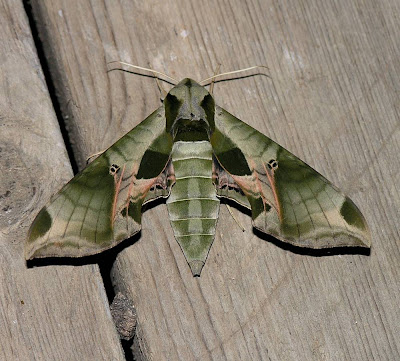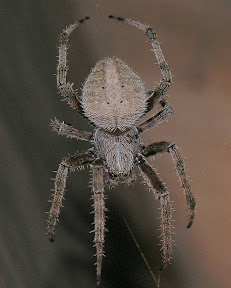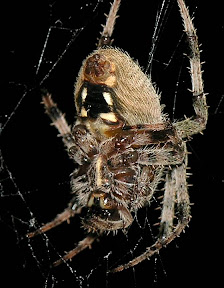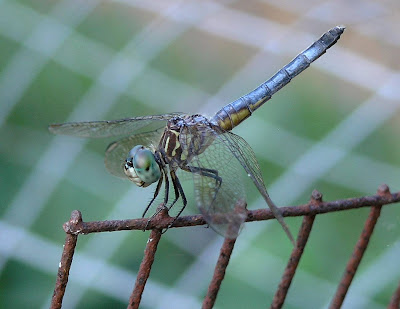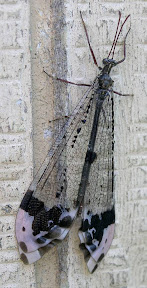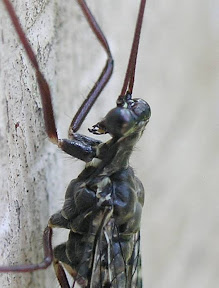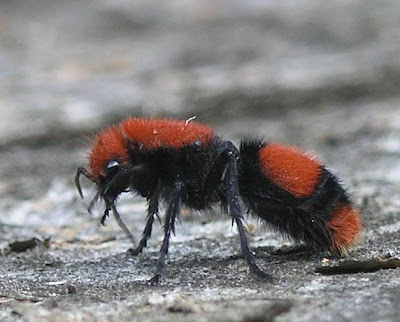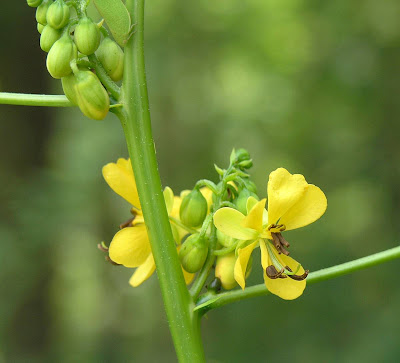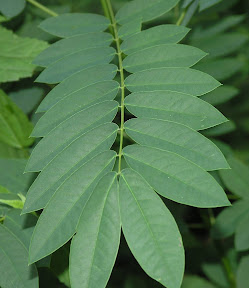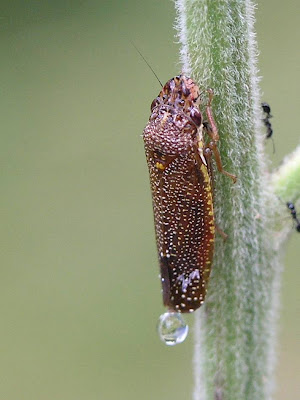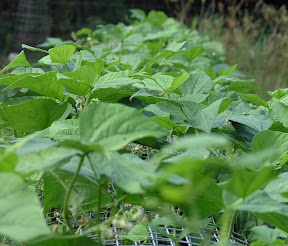
This is the caterpillar I've always called a Tomato Hornworm, but it isn't. True, it is usually found munching on tomato plants, but it is actually a
Tobacco Hornworm and is the larvae stage of the Carolina Sphinx moth (
Manduca sexta). Host plants include all members of the Nightshade Family (Solanaceae) including potatoes, tomatoes and tobacco. In our garden, I haven't found these caterpillars to be all that picky about what they eat. Tomatoes do seem to be their preferred host, but we've also had them strip pepper plants and I often find them on our Datura (Jimpson Weed).
The primary identifying characteristics for the Tobacco Hornworm are the seven diagonal white lines edged with black and the dorsal horn which is orange, pink or red.
There is a
Tomato Hornworm. It is the larvae of the Five-spotted Hawk Moth (
Manduca quinquemaculata). Tomato Hornworms look very similar, but have eight V-shaped stripes and their dorsal horn is black.
Caterpillar LegsAll caterpillars have
three pair of true legs under their thorax, first body segment behind the head. These legs are jointed, segmented and have little hooks on the end. The are usually used for grasping food. Most caterpillars also have five pairs of prolegs under their abdomen. The prolegs are not segmented, but are cylindrical. They are used for walking and clinging, as they have a set of microscopic hooks on the base (crochets). The last pair of prolegs on the anal abdominal segment are usually called claspers. So, most caterpillars are hexadecapodal because they have a total of 16 legs.
There are
many non-hexadecapodal caterpillars, notably the inch-worm type cats, which have six true legs, but only 8, 6 or 4 prolegs. There are also caterpillars with no legs at all. And, there are larvae of some wasps and flies that look like caterpillars, but technically are not. They have more than 16 legs.

Tomato Hornworm -- Not!

